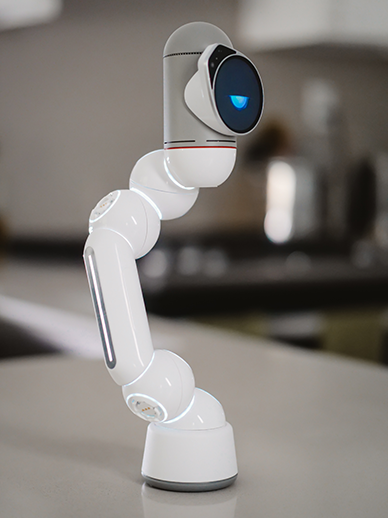As technology advances at an unprecedented rate, robotics has emerged as one of the most significant and transformative developments of the 21st century. Across a wide range of industries, from manufacturing and construction to medicine and beyond, Robotic systems have revolutionized every area, bringing about significant increases in efficiency, precision, and safety.
One area where robotics has had a particularly significant impact is welding. In this industry, robots perform repetitive tasks that would otherwise require manual labor.
Another field of robotics is painting. Robotic painting systems are in different industries, from automotive manufacturing to aerospace engineering.
In the medical industry, robotics has enabled doctors and surgeons to perform complex procedures that were once thought unreal.
Beyond these specific industries, robotics is also being used in a wide range of applications, from logistics and transportation to agriculture and environmental monitoring. In these fields, robots are being employed to automate repetitive tasks, gather data, and perform operations that are too dangerous or difficult for humans to undertake.
In this blog, we will explore the various ways that robotics are being used in industry, examining the benefits they bring as well as some of the potential drawbacks. Through this analysis, we hope to gain a deeper understanding of the role that robotics play in modern society, and how they may continue to shape the future of work for years to come.
Types of Robotic Welding Processes
Welding requires a high level of education and skill. However, the number of professional welders does not meet the needs of the industry.
To help with the demands of the industry, manufacturers can use robotic welding equipment to supplement in-person applications.
The use of robotic welding systems provides numerous benefits, including increased speed, accuracy, and consistency, while also reducing the risk of injury for human welders. This has led to significant cost savings for companies that rely on welding as part of their manufacturing processes. There are various welding processes including arc welding, resistance welding, spot welding, TIG welding, and more.
Arc welding is one of the most common types of welding and involves the use of a welding power supply to create an electric arc between an electrode and a base material to melt the metals at the welding point. Welding robots equipped for arc welding can use various methods such as MIG, TIG, and plasma welding.
- Resistance welding
uses heat generated by passing an electric current through the resistance caused by two or more metal parts that were held together under pressure. This type of welding is used in automotive and aerospace industries where high-quality welds are required.
- Arc Welding
One of the most common types of robotic welding is the arc process. In this method, an electric arc generates extreme heat, up to 6,500 degrees Fahrenheit, which melts the metal. Molten metal joins parts together, solidifying into a stable connection after cooling. When a project requires a large volume of accurately conjoined metals, arc welding serves as an ideal application.[1]
- Spot welding
is a type of resistance welding that involves applying pressure and electrical current at specific locations on the metal to create a weld. This method is often used for joining thin sheets of metal together, and it is commonly seen in the production of automobiles.
- TIG welding
It is also known as tungsten inert gas welding, uses a non-consumable tungsten electrode to produce the weld, and is often used for high-precision welding applications where a clean and precise weld is required. Welding robots equipped with TIG welding capability can be used for both manual and automated welding tasks.
- Other types of welding robots
include laser welding, friction stir welding, and electron beam welding. Each of these methods has its own set of advantages and disadvantages and is used in various industries depending on the application requirements.
How Robotic Welding Works
Articulating robot welding arms can move in multiple planes, while rectilinear ones move in three dimensions. The robot, while a high-energy torch melts metal to begin the process of Welding, is receiving wire according to need by placing it through an auxiliary wire feeder. These devices can meet high temperatures, approximately a thousand degrees Celsius, to protect human workers.
The manipulator in a robot arm is heating the metal to join the desired pieces. The wire feeder is supplying the arm and torch with more metal wire, if necessary. The arm moves the torch to the cleaner to remove any metal splatters from the component, which can be hardened without this process while waiting for the following parts to be welded.
Overall, welding robots offer numerous advantages over manual welding, including increased productivity, improved quality, and reduced labor costs.[1]
Pros of Robotic Welding
There are several advantages of using robotic welding in various industries, including:
- Increased efficiency and productivity: Robotic welding machines can operate continuously without the need for breaks or rest, allowing for faster and more consistent production.
- Improved quality and precision: Robots are capable of consistently producing high-quality welds with a high level of precision and accuracy, which leads to better product quality and reduces the likelihood of defects.
- Enhanced safety: Welding can be a dangerous task for workers due to the high heat and potentially hazardous fumes. Robotic welding eliminates the need for a human operator to be exposed to these hazards, making the workplace safer.
- Reduced costs: Robotic welding can reduce labor costs by eliminating the need for skilled human welders, while also minimizing material waste and reducing the need for rework.
- Flexibility: Robotic welding systems can be programmed to perform a wide range of tasks, making them suitable for use in a variety of industries and applications.
Robotic welding has a wide range of applications in various industries, including:
- Automotive industry: Robotic welding is extensively used in the automotive industry for manufacturing car bodies, chassis, exhaust systems, and other components.
- Aerospace industry: Robotic welding is used to manufacture aircraft parts, such as engine components, landing gear, and wings.
- Construction industry: Robotic welding is used to weld steel beams to construct buildings, bridges, and other infrastructure projects.
Painting robots [2]
By using advanced sensors and algorithms, these systems can apply paint with incredible precision, resulting in a flawless finish every time. Not only does this increase efficiency and reduce costs, but it also improves overall quality, making it possible to produce products that meet even the most stringent of standards. Painting robots have several benefits, including:
- Increased Efficiency: Painting robots are capable of working at high speeds and around the clock, which increases productivity and reduces production time.
- Consistent Quality: Robots can consistently apply a uniform amount of paint, ensuring consistent quality across all parts and products.
- Reduced Labor Costs: Using painting robots can reduce labor costs by eliminating the need for manual painters and reducing labor-related expenses such as sick days and vacation time.
- Improved Safety: Painting robots eliminate the hazards associated with manual painting, including exposure to harmful fumes and repetitive strain injuries.
- Lower Material Waste: Due to their consistent application, painting robots can reduce material waste by minimizing overspray and overuse of paint.
- Flexibility: Painting robots can be programmed to work on a wide range of surfaces and materials, making them well-suited for use in a variety of industries.
Robotic Painting applications
Painting robots have a wide range of applications in various industries, including:
- Automotive industry: Painting robots are used to paint car bodies, bumpers, and other components.
- Aerospace industry: Painting robots are used to paint airplane parts, including fuselage sections, wings, and landing gear.
- Consumer goods industry: Painting robots are used to paint appliances, furniture, electronics, and other consumer products.
- Construction industry: Painting robots are used to paint buildings, bridges, and other infrastructure projects.
- Industrial manufacturing: Painting robots are used to paint machinery, industrial equipment, and other large-scale components.
Overall, painting robots are ideal for any application that requires high-quality, consistent painting while increasing productivity and workplace safety.
Robotic surgery
Robotic surgical systems provide a level of precision that simply cannot be matched by human hands, allowing for safer and more effective surgeries. These systems are useful in delicate procedures, such as brain surgery, where even the slightest error could have catastrophic consequences.
Robotic surgery, also known as robot-assisted surgery, is a type of minimally invasive surgery that uses robotic systems to perform surgical procedures. The benefits of robotic surgery include
- Increased precision: Robotic systems allow for greater precision during surgery, which can reduce the risk of complications and improve outcomes.
- Minimally invasive: Robotic surgery is less invasive than traditional surgery, which can lead to less pain, scarring, and a faster recovery time.
- Improved visualization: Robotic systems provide surgeons with enhanced visualization of the surgical site, allowing for better accuracy and control during the procedure.
- Reduced blood loss: Robotic surgery can result in less blood loss during the procedure, reducing the need for blood transfusions.
Drawbacks of robotic surgery
However, there are also some drawbacks to robotic surgery, including:
- High cost: The equipment and maintenance required for robotic surgery can be expensive, making it inaccessible for some patients and healthcare providers.
- Limited tactile feedback: Robotic systems lack the tactile feedback that surgeons have during traditional surgery, which can make it difficult for them to assess tissue and organ texture.
- Longer operating times: Robotic surgeries can take longer to perform due to the setup and calibration required for the robotic system.
Robotic surgery applications
Robotic surgery has a wide range of applications across various medical specialties. Some examples of the application of robotic surgery include:
- Gynecology: Robotic surgery can be used to perform gynecological procedures such as hysterectomies, myomectomies, and endometriosis excision.
- Urology: Robotic surgery is commonly used for prostatectomies, kidney surgeries, and bladder surgeries.
- Cardiology: Robotic surgery can be used for minimally invasive heart surgery such as mitral valve repair or replacement.
- General surgery: Robotic surgery can be used for gallbladder removal, hernia repair, and colorectal surgery.
Overall drawbacks
Of course, as with any new technology, there are also potential drawbacks to the widespread use of robotics in industry. One concern is the impact that automation may have on employment, particularly for low-skilled workers whose jobs are most at risk of being replaced by robots. Additionally, there are questions about the safety and security of robotic systems, particularly as they become more sophisticated and interconnected.
Despite these concerns, however, it is clear that the introduction of robotics has had an overwhelmingly positive impact on a wide range of industries. From increased efficiency and precision to improved safety and quality, the benefits of these systems are difficult to ignore. As we continue to develop new and more advanced robotic technologies, likely, their impact will only continue to grow, shaping the future of work and transforming our world in ways we can only begin to imagine.
References:
- https://www.summitsteelinc.com/resources/blog/robotic-welding-processes/
- https://ieeexplore.ieee.org/document/9812008



Add a Comment